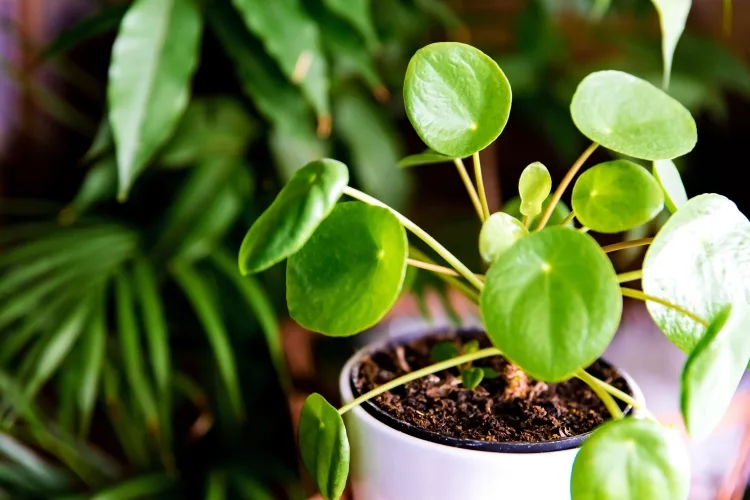reviewed by Christina Lopez
Plants have a specific reproductive and germination cycle, and they propagate both sexually and asexually. Germination by seeds is the most common and easy way of reproducing flowering plants. Grafting a stem of one plant to the roots of another is a more advanced method. Budding is its sub-type. For mature plants, propagation by division is a significant variant. Another critical and commonly used technique is by using cuttings. Usually, we take stem cuttings and use them widely for woody ornamental plants.
Contents
Plants can also be grown by leaf cuttings. Germination through leaf cuttings has the risk of early decay of the newly growing plant or will only produce a few roots strong enough to nurture the plant. Because of this reason, leaf cuttings have become almost exclusive to growing indoor plants. However, this is a faster and more reliable method of propagation than seeds. The list of plants that propagate through leaf cuttings is enormous.

Some of the plants that can be grown from leaf cuttings include;

The Pilea Peperomioides, commonly known as the Chinese Money Plant. It is also known as the friendship plant because it was transferred to closed ones through these cuttings in ancient times.
The second plant that is loved by skincare fanatics is the Aloe Vera Plant. However, when grown through leaf cuttings, it has a relatively low chance of developing stern roots. Therefore, it is advised to grow aloe vera from offsets.
Other plants in the category are the beautiful ornamental plants, the Snake Plant, and the Begonia. The Snake Plant requires low maintenance and is a favorite due to its leaves with dark green stripes. In contrast, Begonias have colorful flowers that bring divinity to your patio. Cactuses are also widely propagated through leaf cuttings and require the same low light, drought type environment as does the Snake Plant.
Jade plant, known for its good luck and merry, is also germinated through leaves and placed indoors. Speaking of interiors, Spider Plant is an excellent addition to your lounge as they can be quickly grown from plantlets, that is, the leaves growing at the crown.
Exotic beauty with eccentric, dark violet flowers, the African Violet can also be grown from healthy, disease-free leaves. It can also survive hot tropical climates. Sansevieria is another exciting addition to this list. This plant has long, sword-shaped leaves, and a whole leaf is taken and cut into 2-inch cuttings. However, cuttings should be upright, or the roots won't sprout. Kalanchoe and Plectranthus, the Swedish Ivy, also belong to this category.
The vast list also includes Sedum, Bryophyllum pinnatum, Streptocarpus, Saintpaulia, Cape Primrose, Nasturtium, Cape Cowslip, and the Jelly Bean Plant.
Succulents are by far the most superior in growing through leaf cuttings. They have thickened, engorged, and fleshy parts. It takes about two weeks for the succulents to grow from leaf cuttings, and new leaves sprout in about eight weeks.
Plant propagation from leaves is an easy method and requires the right concentration on the growing media. First of all, select the plant that can be grown via leaf cuttings, especially those with thick, vigorously growing leaves. Then select a healthy, disease-free leaf from the plant and cut it along with one and a half inches of its stem. Now, make a compatible moist soilless rooting medium and place the already cut portion in it at an angle.
Leaf cuttings are of various types. In Leaf-Petiole Cutting, a healthy leaf with one and a half-inch of the petiole (shoot) is removed and placed in the prepared medium. Leaf-Petiole cuttings are used for peperomias and saintpaulias.
Another type is the Leaf Sections. Here, about 2-inch sections of the whole leaf are cut and propagated for plants such as the streptocarpus and sansevieria.
Whole Leaf Cuttings are also taken, especially for plants with noticeable fleshy leaves like succulents. Split-Vein and Leaf-Bed Cuttings are also essential types.
Leaf cuttings are a cheaper method of growing new leaves. It only takes a few minutes per pot to take the cuttings and then plant them in soil and only 50 to 75 cents per pot, making it the most economical method of plant propagation.
The technique is a significant factor when it comes to using leaf cuttings. The gardener must know the cutting required by a particular plant and make a suitable potting mix with efficient watering. He should only select disease-free and full-grown green leaves for cutting. When placing the cutting into the soil, insert about two-thirds of the stem along with the leaf. Also, direct the tips of the leaf-cutting away from the pot's center.
If you want to accelerate the process of growth and new roots formation, a great tip is to place the pot on a heating mat with bright but indirect sunlight. An added greenhouse effect will also accelerate the process. After the new leaves start to form, spray a mild adaptable fertilizer. Also, moving the pots into a larger surface area after several leaves have sprouted is always an excellent idea.
10 Easy Growing Beans for Classroom Project
 |
 |
 |
 |

About Christina Lopez
Christina Lopez grew up in the scenic city of Mountain View, California. For eighteen ascetic years, she refrained from eating meat until she discovered the exquisite delicacy of chicken thighs. Christina is a city finalist competitive pingpong player, an ocean diver, and an ex-pat in England and Japan. Currently, she is a computer science doctoral student. Christina writes late at night; most of her daytime is spent enchanting her magical herb garden.
 |
 |
 |
 |
Check These Out
Get new FREE Gifts. Or latest free growing e-books from our latest works.
Disable Ad block to reveal all the links. Once done, hit a button below
 |
 |
 |
 |